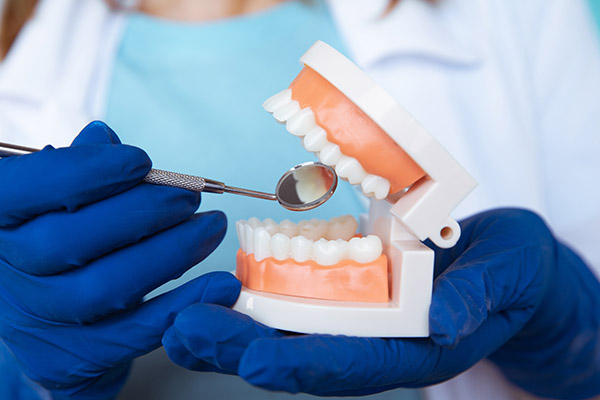 Your restorative dentist can present treatments that can fix your dental issues. You can have a new smile after your appointment. Some dental problems may need more than one visit. Knowing when to see a restorative dentist can help you get the right procedure to bring back your smile and dental health.
Your restorative dentist can present treatments that can fix your dental issues. You can have a new smile after your appointment. Some dental problems may need more than one visit. Knowing when to see a restorative dentist can help you get the right procedure to bring back your smile and dental health.
When one has broken teeth
A restorative dentist can place a crown for a severe break on the affected tooth. Shaving off a significant amount of dental structure will provide enough space for the custom cap. The crown can restore the appearance of the damaged tooth. It can also strengthen and protect the tooth from future damage or decay.
The dentist will take an impression of the damaged tooth. The impression will help the lab create a custom permanent crown. While waiting, the patient can wear artificial crowns. The patient will come back to the clinic and fit the permanent crown. Gluing it to the tooth will secure it.
The restorative dentist can also use dental bonding to repair a broken tooth. Roughening the broken part with a solution will help the bonding material stick better to the tooth. Applying the bonding material will follow. Shaping and polishing it will allow it to blend well with the natural dental structure.
When one needs a dental replacement
Studies reveal that tooth loss is a common dental problem among adults. A restorative dentist can present dental replacement options. The most stable restorations are dental implants. These dental replacements can bring back the missing dental roots and dental crowns. The individual can then enjoy a strong bite and a complete smile.
Dental implants can strengthen the jawbone by stimulating it. This signals the body to send nutrients to the jawbone for tissue repair and cell regeneration. Implants can serve as single-tooth replacements. They can also function as foundations for dentures and bridges that can replace many teeth.
When a root canal is necessary
Severe dental infection or decay may reach the pulp of the tooth. The restorative dentist can preserve the dental structure by performing a root canal. Numbing the tooth will come first. The dentist will remove the infected or damaged pulp. Cleaning, disinfecting, and drying the pulp cavity will follow.
Placing gutta-percha in the pulp cavity will come next. Research shows that a tooth weakens after removing the pulp. Gutta-percha will stabilize the tooth. The restorative dentist will cover the treated tooth with a custom-fit dental crown. Doing so will protect and strengthen the vulnerable, natural tooth underneath.
When a decayed tooth needs filling
Cavities may worsen over time. This is enough reason to see a restorative dentist to get dental fillings. Grinding away the decayed areas will come first. Cleaning and filling them will follow. Applying the filling material will seal the tooth. The patient can have either porcelain, resin, or gold fillings. Either material can stop the decay from taking over the decayed teeth.
A restorative dentist can bring back your dental health and sparkling smile
Dental decay or damage can distort your smile and reduce your self-esteem. It can also impair your dental functions. Going to your restorative dentist can correct any dental issue you may have. Working with your dentist can help you regain your stunning smile and dental health.
Request an appointment or call Gorfinkel Dentistry at 954-231-5007 for an appointment in our Plantation office.
Related Posts
A restorative dentist primarily aims to protect oral health through tooth restorations. These restorations can also prevent pain, address any discomfort, decrease the risk of future issues, and revitalize the appearance of a smile. Here is a look at common problem-causing conditions and treatments they use to address them.Decay can wreak havoc, causing tooth pain,…
Curious about what a restorative dentist does? Read on to learn more. The unexpected nature of dental injuries can turn ordinary moments into emergencies. These injuries impact oral health and comfort, whether it is from sports mishaps, accidental falls, or an auto accident. A restorative dentist has the skills and tools to repair and restore…
Wondering what a restorative dentist can do about worn-down teeth? Read on to learn more. It is normal for teeth to wear down. However, it becomes problematic if the rate of wear is disproportional to the patient's age. This common dental issue weakens the teeth and also makes the tooth less appealing. A few oral…
